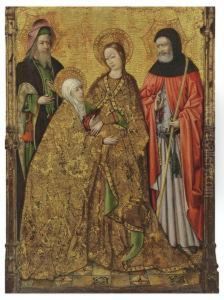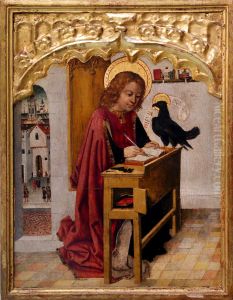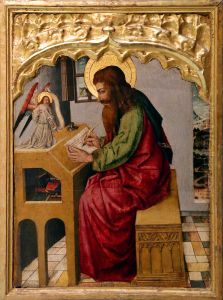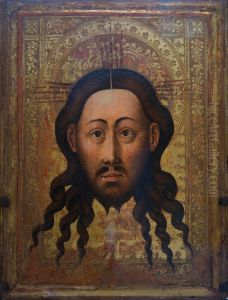Juan Rexach Paintings
Juan Rexach was a Gothic painter of the Spanish school, active in the region of Valencia during the 15th century. While the exact details of Rexach's life, including his birth and death dates, remain somewhat elusive, his contributions to the Valencian school of panel painting have been recognized as significant. His work is characterized by the strong influence of contemporary Flemish painting, which had become highly influential across Europe due to the circulation of artworks and artists.
Rexach's paintings are noted for their meticulous attention to detail, rich color palette, and the incorporation of intricate patterns and textures. These characteristics are emblematic of the International Gothic style, which blended Gothic and Renaissance elements before the latter became predominant in European art. Rexach's work often included religious themes, which was typical for the period, with altarpieces and devotional panels being the mainstay of his oeuvre.
Unfortunately, due to the scarcity of records, much of what is known about Juan Rexach's life and career comes from the study of his surviving works and those attributed to him. It is believed that he was active from around the 1430s until the late 15th century. One of his most famous works is the altarpiece for the high altar of the church of the monastery of Santes Creus, which was commissioned in 1485 and is considered a masterpiece of late Valencian Gothic painting.
Despite his apparent success and the high quality of his art, much about Rexach's training, personal life, and the scope of his workshop remains unknown. The last documented reference to him dates from 1487, and it is presumed that he died shortly thereafter. His legacy lives on through his contributions to the Gothic art of Valencia and the influence he had on subsequent generations of Spanish artists.



